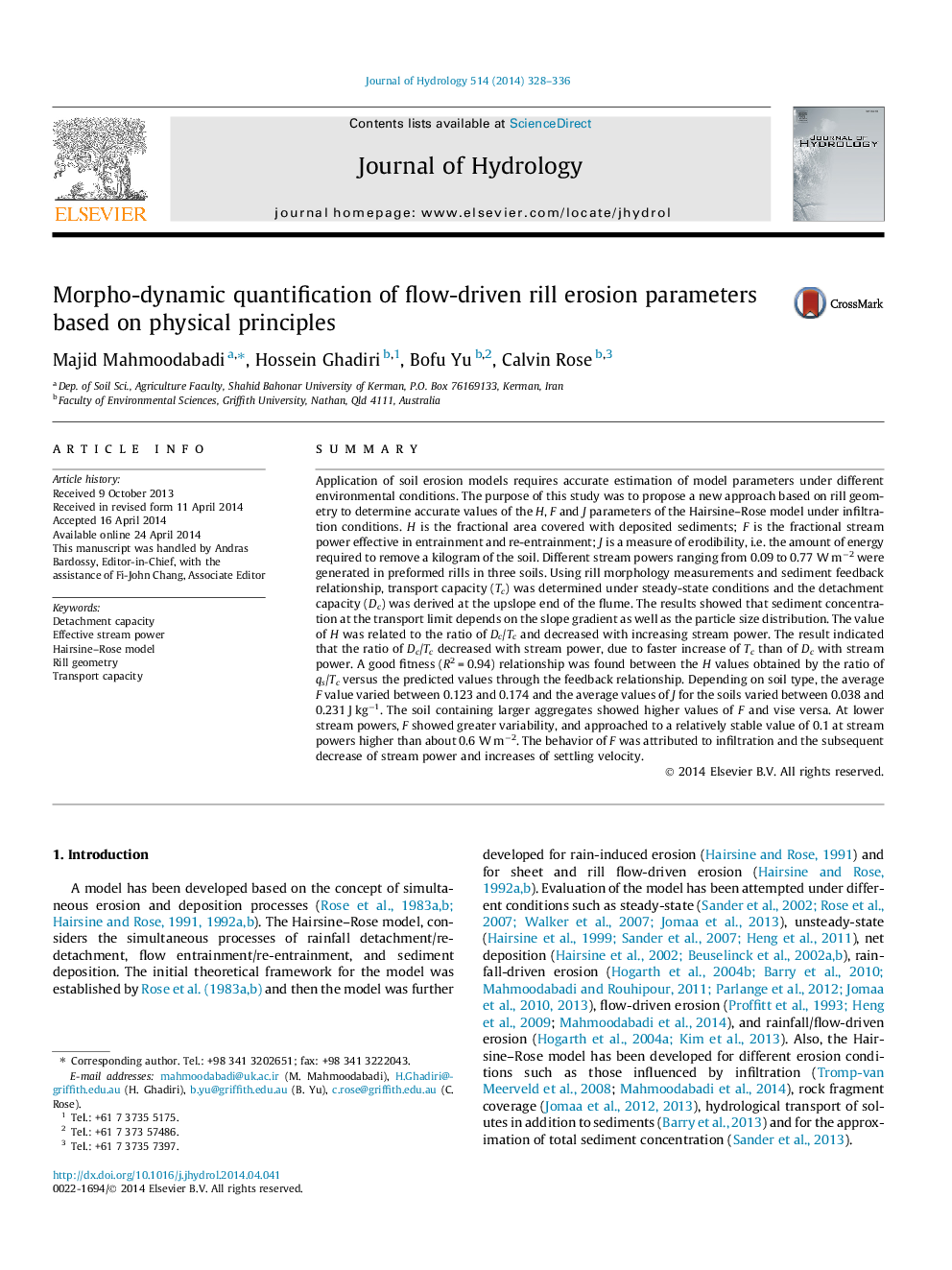| کد مقاله | کد نشریه | سال انتشار | مقاله انگلیسی | نسخه تمام متن |
|---|---|---|---|---|
| 4576025 | 1629934 | 2014 | 9 صفحه PDF | دانلود رایگان |
• H was evaluated by the ratio of sediment load to Tc and the feedback relationship.
• F approached to a stable value of 0.1 at stream powers higher than 0.6 W m−2.
• Supposing F = 0.1, the model tended to under-estimate entrainment rates.
SummaryApplication of soil erosion models requires accurate estimation of model parameters under different environmental conditions. The purpose of this study was to propose a new approach based on rill geometry to determine accurate values of the H, F and J parameters of the Hairsine–Rose model under infiltration conditions. H is the fractional area covered with deposited sediments; F is the fractional stream power effective in entrainment and re-entrainment; J is a measure of erodibility, i.e. the amount of energy required to remove a kilogram of the soil. Different stream powers ranging from 0.09 to 0.77 W m−2 were generated in preformed rills in three soils. Using rill morphology measurements and sediment feedback relationship, transport capacity (Tc) was determined under steady-state conditions and the detachment capacity (Dc) was derived at the upslope end of the flume. The results showed that sediment concentration at the transport limit depends on the slope gradient as well as the particle size distribution. The value of H was related to the ratio of Dc/Tc and decreased with increasing stream power. The result indicated that the ratio of Dc/Tc decreased with stream power, due to faster increase of Tc than of Dc with stream power. A good fitness (R2 = 0.94) relationship was found between the H values obtained by the ratio of qs/Tc versus the predicted values through the feedback relationship. Depending on soil type, the average F value varied between 0.123 and 0.174 and the average values of J for the soils varied between 0.038 and 0.231 J kg−1. The soil containing larger aggregates showed higher values of F and vise versa. At lower stream powers, F showed greater variability, and approached to a relatively stable value of 0.1 at stream powers higher than about 0.6 W m−2. The behavior of F was attributed to infiltration and the subsequent decrease of stream power and increases of settling velocity.
Journal: Journal of Hydrology - Volume 514, 6 June 2014, Pages 328–336
